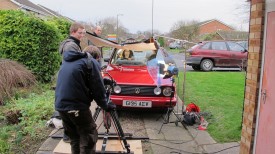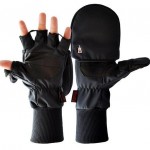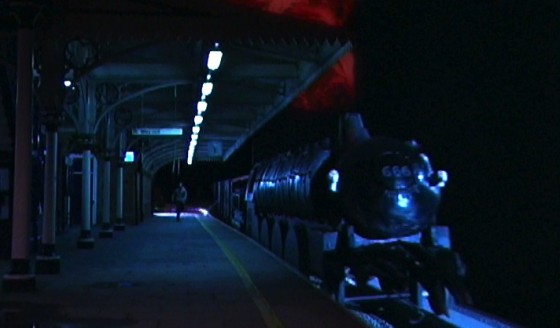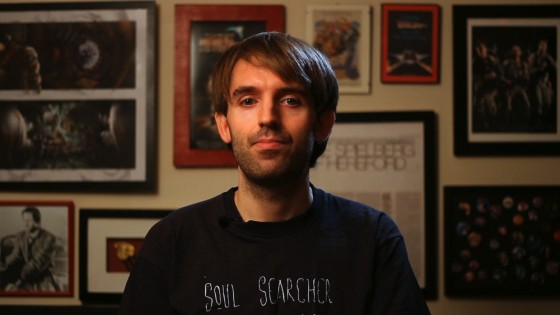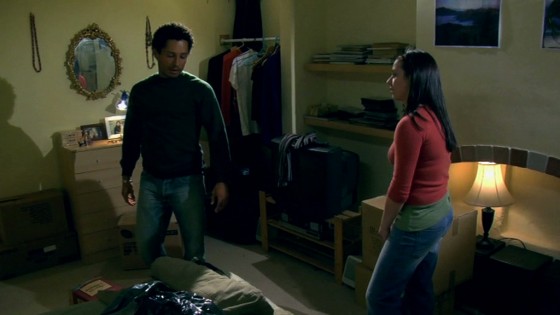Earlier this year I was hired to DP some promotional spots for Onstage in London. Onstage produces content for the web, hotel TV channels and the growing number of TVs in London taxi cabs, on the subject of West End theatre. The brief was to shoot interviews with actors and creatives against a white backdrop, to be intercut with EPK (Electronic Press Kit) footage of the shows or edited into montages like this one:
I’ve always been a bit wary of shooting against white screens. The danger can be that you have to pump in so much light to make the screen blow out on camera (meaning it turns to complete, uniform white) that the whole image becomes flat and you’re left with no shape to your talent’s face.
Further complicating matters was that, on the first day of shooting, we were travelling to the talent, rather than vice versa, so we were often setting up the backdrop, lights and camera in cramped dressing rooms.
Here is the set-up I came up with:

Yes, just one light. That one light does four things:
- Its direct light blows out the white backdrop.
- Its direct light through the diffuser serves as the talent’s key.
- Its bounce light creates a little edging on the talent. (I initially set up a dedicated backlight, but found that this bounce was doing a better job. Besides, if you put in too much backlight the talent starts to blend into the white screen.)
- The level of ambient light it created in the room served as fill. Sometimes there was too much fill, in which case I would have Colin hold up a black card near the talent’s down side (i.e. the side not lit by the key) to block some of the ambience and restore some shape and contrast to the image.
The next time we shot for this project we were in just one room, with significantly more space than we’d had before, so I plumped for a different set-up:

This time there was enough room to place the talent well away from the backdrop and light them separately. Two Arrilites blow out the backdrop while the fluorescent lamp serves as the talent’s key. Fill is provided by a reflector and a touch of edge light is serendipitously provided by spill from the cooling vents on the side of one Arrilite.
Has anyone else out there shot against a white screen recently? I’m interested to hear what your approach to lighting it was.
Visit Onstage’s website at www.onstageinlondon.com




